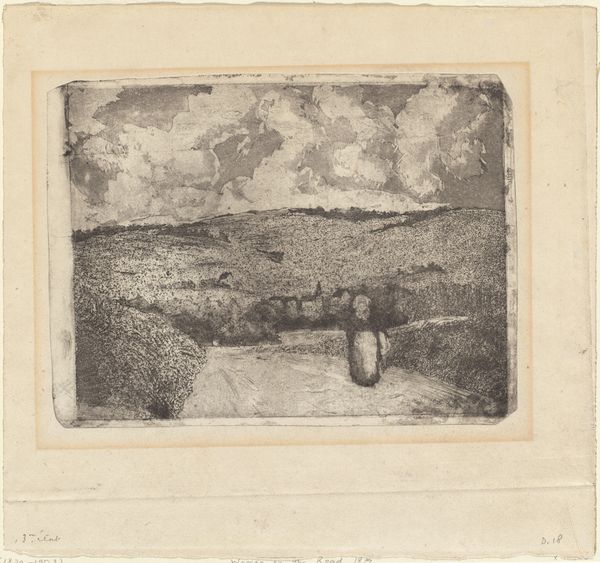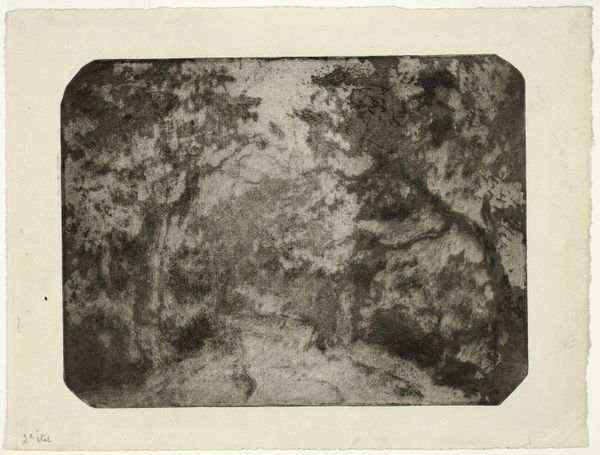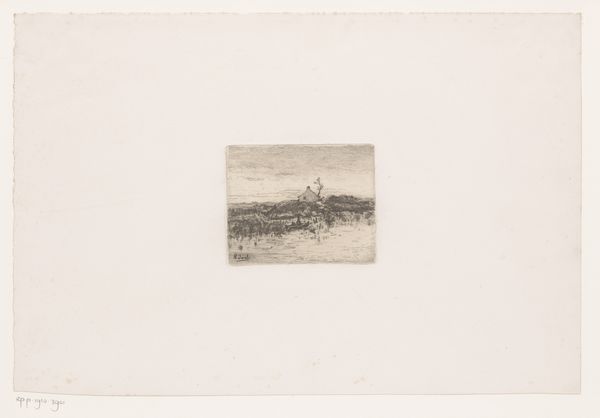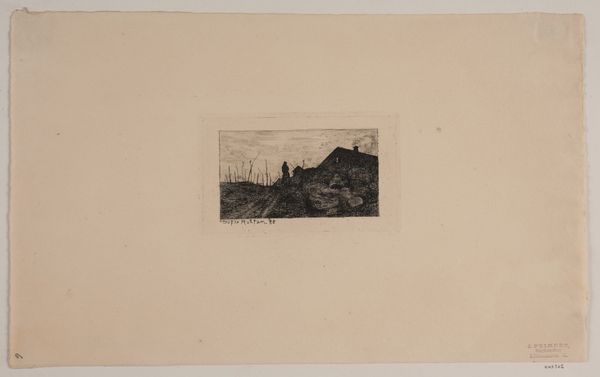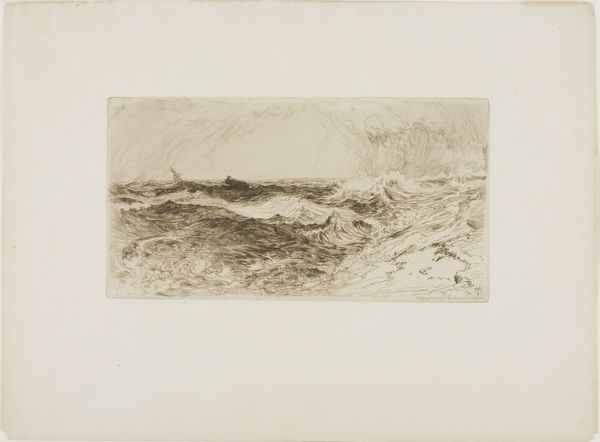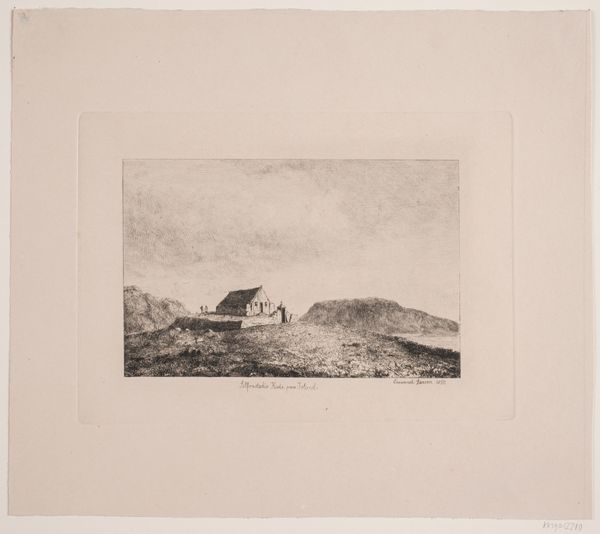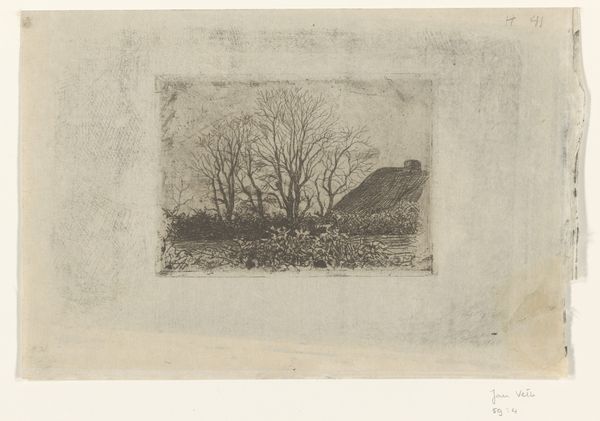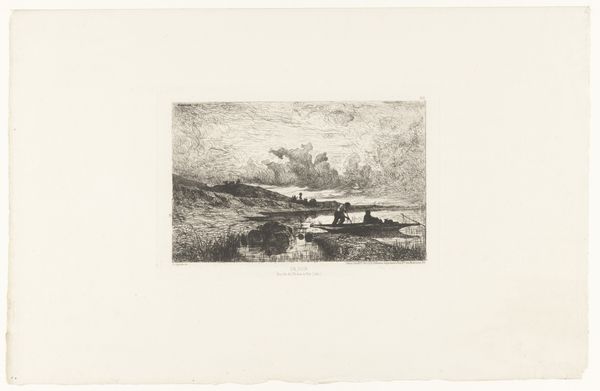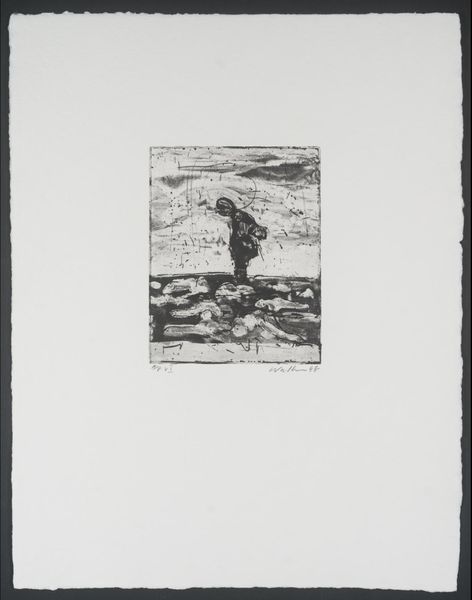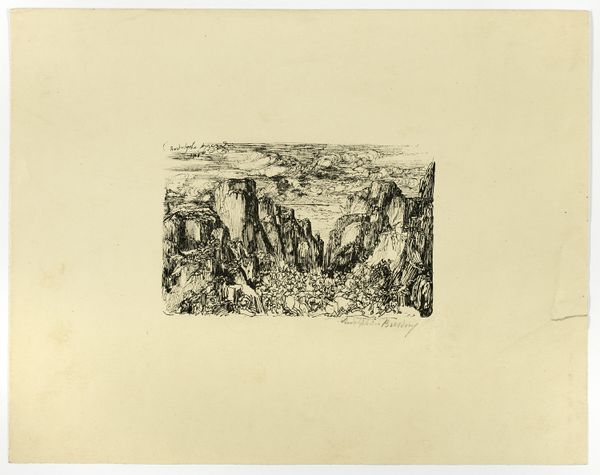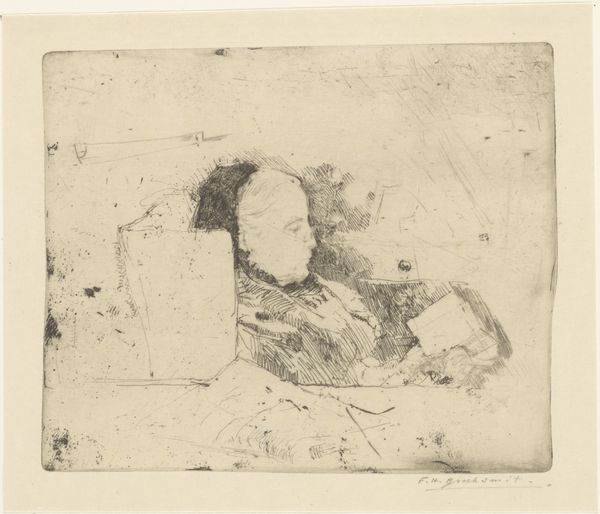
Dimensions: 156 × 209 mm (image/plate); 242 × 320 mm (sheet)
Copyright: Public Domain
Curator: Pissarro’s etching, “The Woman on the Road,” thought to be made sometime between 1879 and 1923, captures a landscape in France. My first thought is the palpable quiet of this image. Editor: Quietude is definitely present, but for me, it speaks to a heavier, laborious existence. Look closely, and you see the figure hunched slightly, perhaps burdened. Consider also the etching process, the deliberate scratching into the plate, mimicking the laborious, repetitive work of someone on the road. The visible plate edges almost function as the frame of a tiny proscenium stage, heightening the artificiality and reminding us this rural scene comes through the labor of a modern urban studio. Curator: Yes, but doesn’t that almost ghostly figure at the edge of the path bring something timeless into the scene? The lack of detail almost makes her an archetype—woman, traveler, seeker. There’s also something comforting about the rolling clouds rendered so skillfully in a fairly limited palette. It suggests something greater watching over her on this journey. Editor: I appreciate the point, but for me, those wispy lines don't simply represent comforting clouds; they underscore the limitations of the etching process. Think of the acids used, the press. Pissarro's hand directly interacts with toxic material and machines to produce the view, changing how we consider landscape tradition. I feel that the subject, location and processes were intertwined. The French countryside was becoming a place of industry itself and the image represents the human’s complicated, changing, place within that context. Curator: I see what you're saying. So, rather than transcendence, you see the constraints and harsh realities of making a living imprinted onto this pastoral scene. It is interesting to consider how the production process does subtly color our viewing experience. Editor: Precisely. Considering the process, materiality, and social environment behind its production adds a crucial layer of depth that traditional analyses might overlook. Curator: Thinking of the iconography—or, perhaps more accurately, the *lack* of explicit symbolic language— alongside the laborious nature of etching does offer a compelling alternative interpretation, enriching my understanding of “The Woman on the Road.” Thank you!
Comments
No comments
Be the first to comment and join the conversation on the ultimate creative platform.
